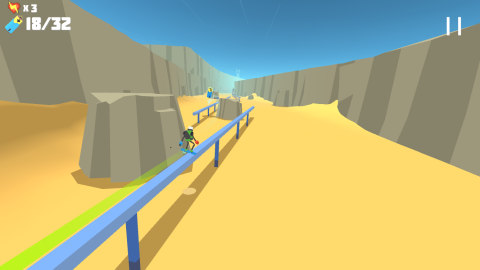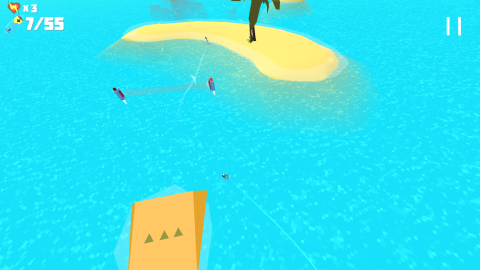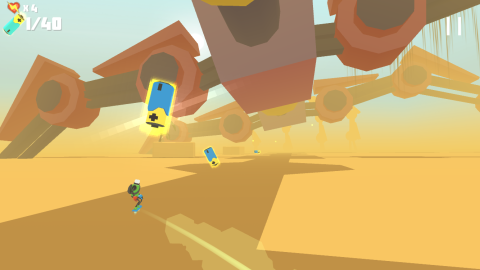The robots have taken over, and it turns out they mostly want to muck about on hoverboards and build monstrous, deadly moving structures — the weirdos
Price: $3.99/£2.99
Size: 80.2 MB
Version: 1.0.2
Developer: Oddrok Oy
[youtube https://www.youtube.com/watch?v=NHUDlZ9sgJQ]
It turns out when humans aren’t around, robots go a bit weird. They hop on to robot hover boards, power their robot cities using batteries (perhaps they are all robot hipsters, into ‘classic’ tech), and build strange robot constructions in the desert.
Unfortunately for the protagonist in Power Hover, one of the robots in this world also happens to be a brazen thief. It’s stolen all the batteries powering the robot hero’s village, plunging it into darkness. Your mission is to track the scoundrel down, scooping up the somewhat convenient trail of batteries left in the criminal droid’s wake.

Mechanically, what follows is effectively an auto-runner, and a heavily choreographed one at that. You scoot along, only able to move left and right, aiming to avoid obstacles, grab batteries and beat each of the 20 stages without gracelessly smacking into a massive wall or getting impaled by something huge and spiked.
This foundation is commonplace on iOS, but Power Hover shines stylistically. Visually, it’s a treat. Sparse locations give you a great sense of space and freedom, even if your pathways are broadly fixed. There’s a great sense of variety as you pick your way through Power Hover’s world, seeing hints of what might have occurred (a dead, grey human city) and what might yet come (massive robot spider droids marching across the desert). There are beautiful moments, scything across gorgeous blue seas, and many tense, tricky dexterity tests, notably when whirling around dizzying tunnels of death.

It’s testament to the game’s design that the basic set-up and controls – the aforementioned choreography, and moving left and right – never come across as reductive. The hoverboard is floaty and takes time to get to grips with, but feels perfect once mastered. And that the majority of levels are identical every time you play not only affords opportunities for gradually figuring out the best routes for ‘perfect’ runs, but also enabled the developers to devise routes that are far more exciting and cinematic than you would have gotten in a procedurally generated game. (A handful of procedural ‘boss battle’ levels do exist, however, further boosting replay value.)
Bar the game’s brevity, the only real snag is that the impact is lessened a little on smaller screens. Power Hover dazzles on an iPad, but doesn’t have quite the same clout on an iPhone, and when the camera zooms right out, it can be a tough to weave your robot hoverboarder through the trickier course sections. But such minor issues shouldn’t stop you seeking out and greedily taking in one of the finest and most elegant iOS game experiences from the past year. And with the promise of more levels to come, Power Hover could be with us for some time yet. Here’s hoping.


